Scientist of the Day - Leopold Blaschka
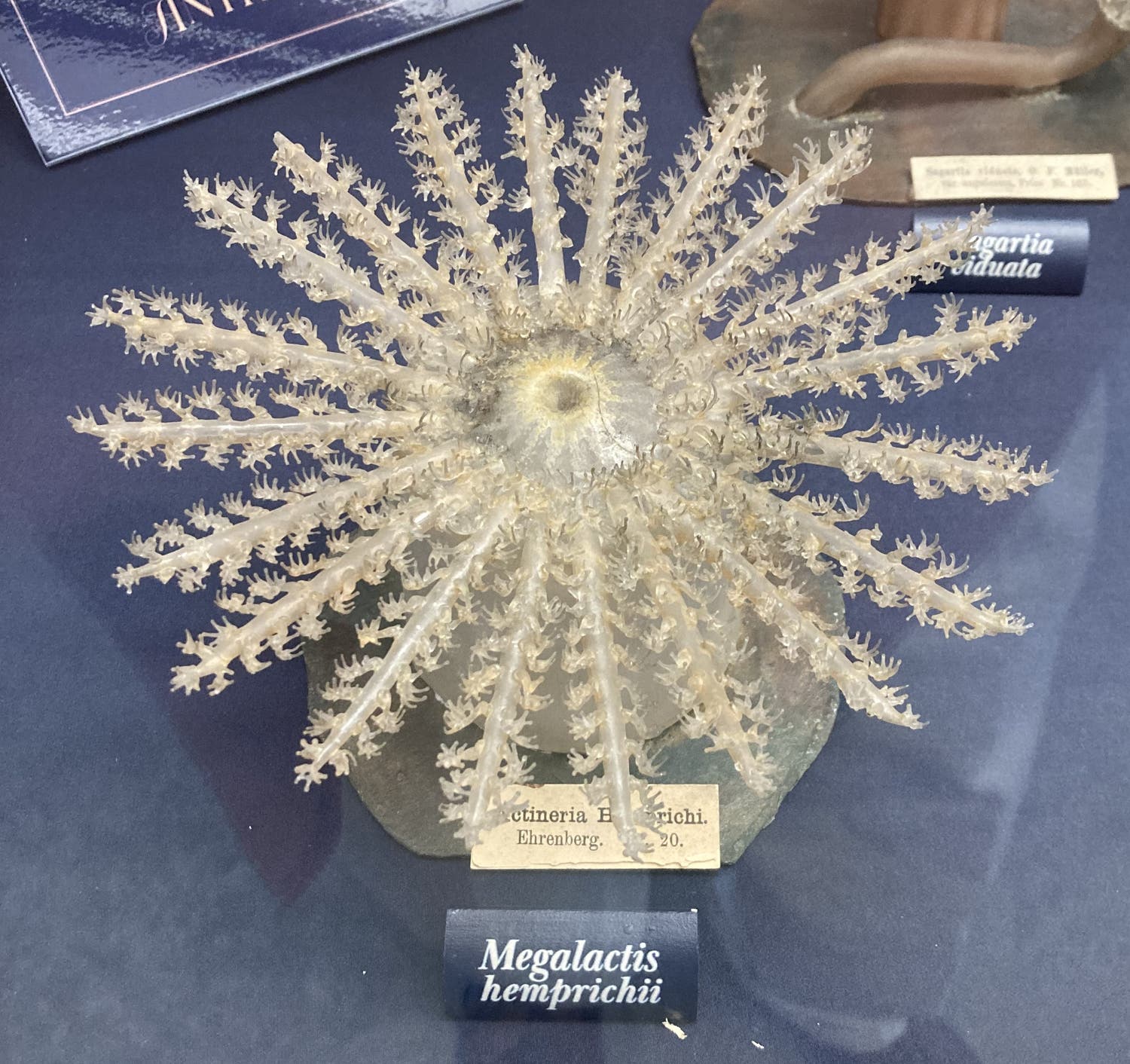
Megalactis hemprichii, a sea anemone, fashioned in glass by Leopold and Rudolf Blaschka, ca 1885, Museum of the Earth, Cornell University (photo by the author)
Leopold Blaschka, a Bohemian glassblower, was born May 27, 1822. In the 1860s, responding to an invitation from a German museum, he began crafting blown-glass models of marine invertebrates for display. They sold well to a world-wide market, and soon his son Rudolf was involved in the business. Later, the Blaschkas turned to making glass flowers, and there is a famous collection of their artwork at the Agassiz Museum of Comparative Anatomy at Harvard. We have written a post on Leopold, featuring glass invertebrates, and one on Rudolf, and the Harvard glass flowers.
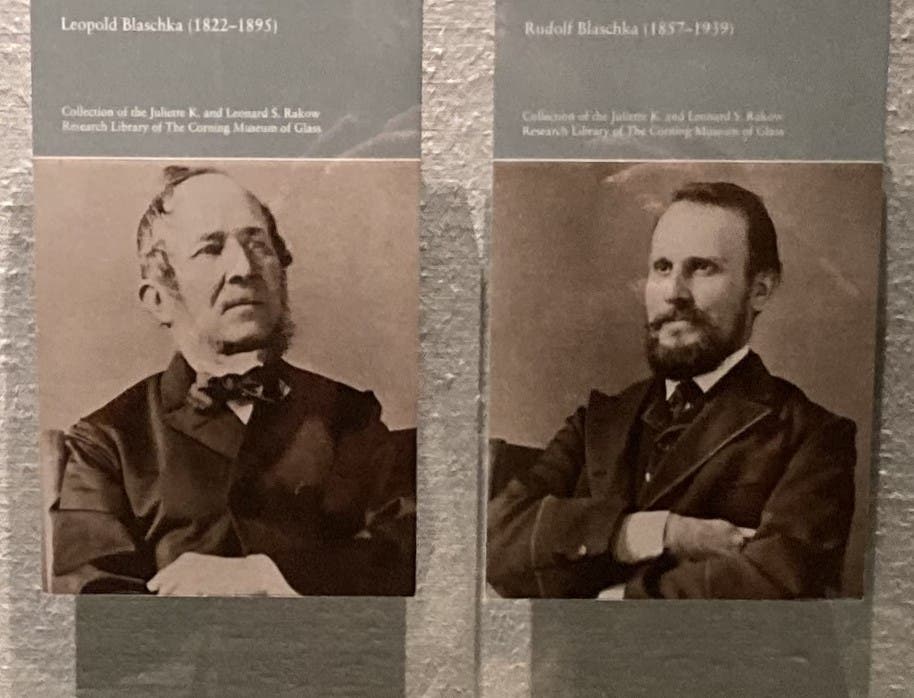
Portraits of Leopold (left) and son Rudolf Blaschka, undated photographs, part of display case, Corning Museum of Glass (photo by the author)
In the post on Leopold, I mentioned that one of the greatest collections of glass invertebrates was at Cornell University, since their President, Andrew Dickson White, had purchased over 700 models in 1885, many of which have survived and have been refurbished. I commented at the time that I had never seen the Cornell collection, much of which has been consigned to the Corning Museum of Glass.
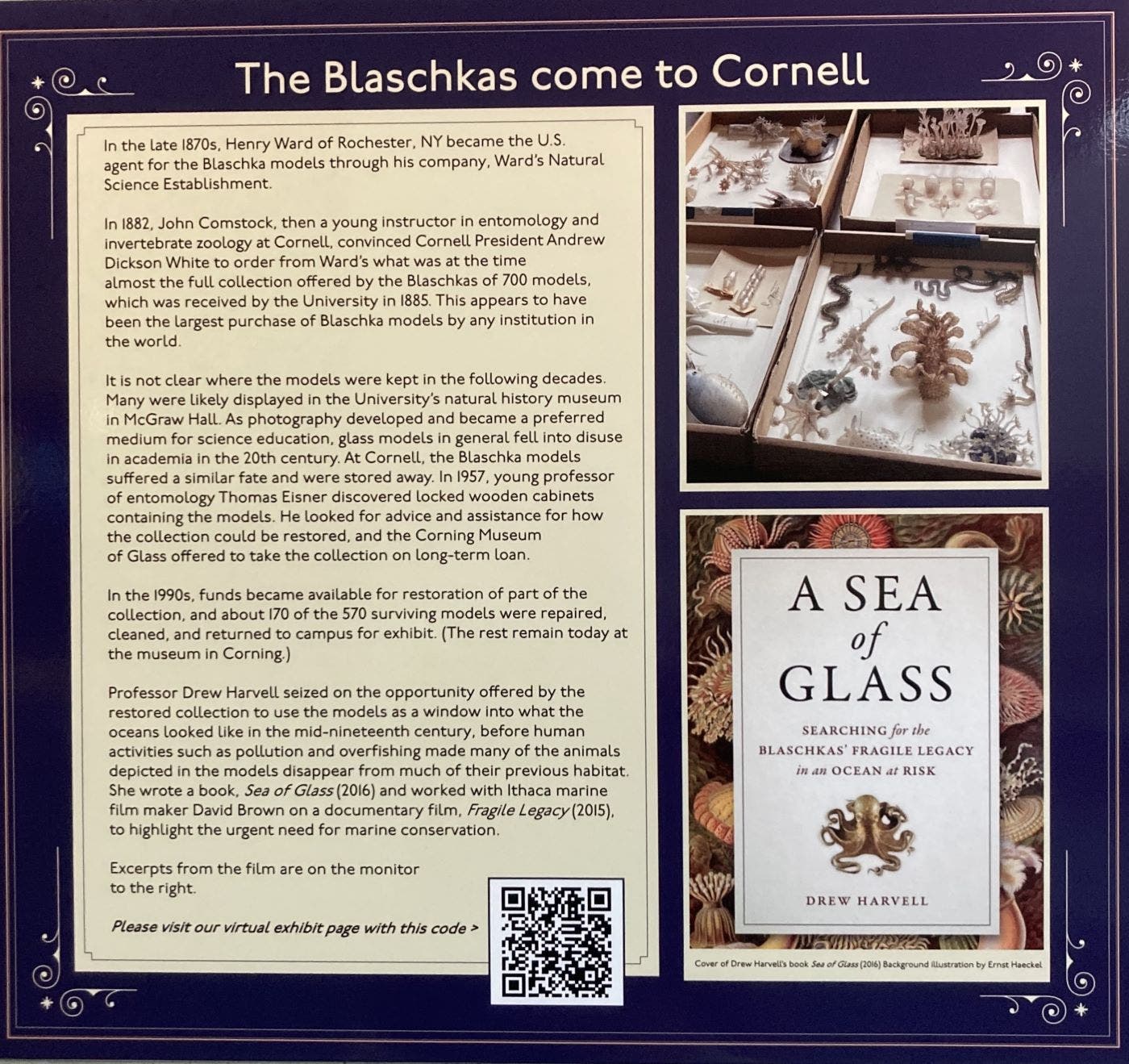
One of the many wall signs explaining the Blaschka Marine Invertebrate Collection, Museum of the Earth, Cornell University (photo by the author)
That hole in my general education has now been filled. We visited both the Cornell Museum of the Earth and the Corning Museum of Glass in April and saw glass invertebrates in each. The images in this post are from those visits.
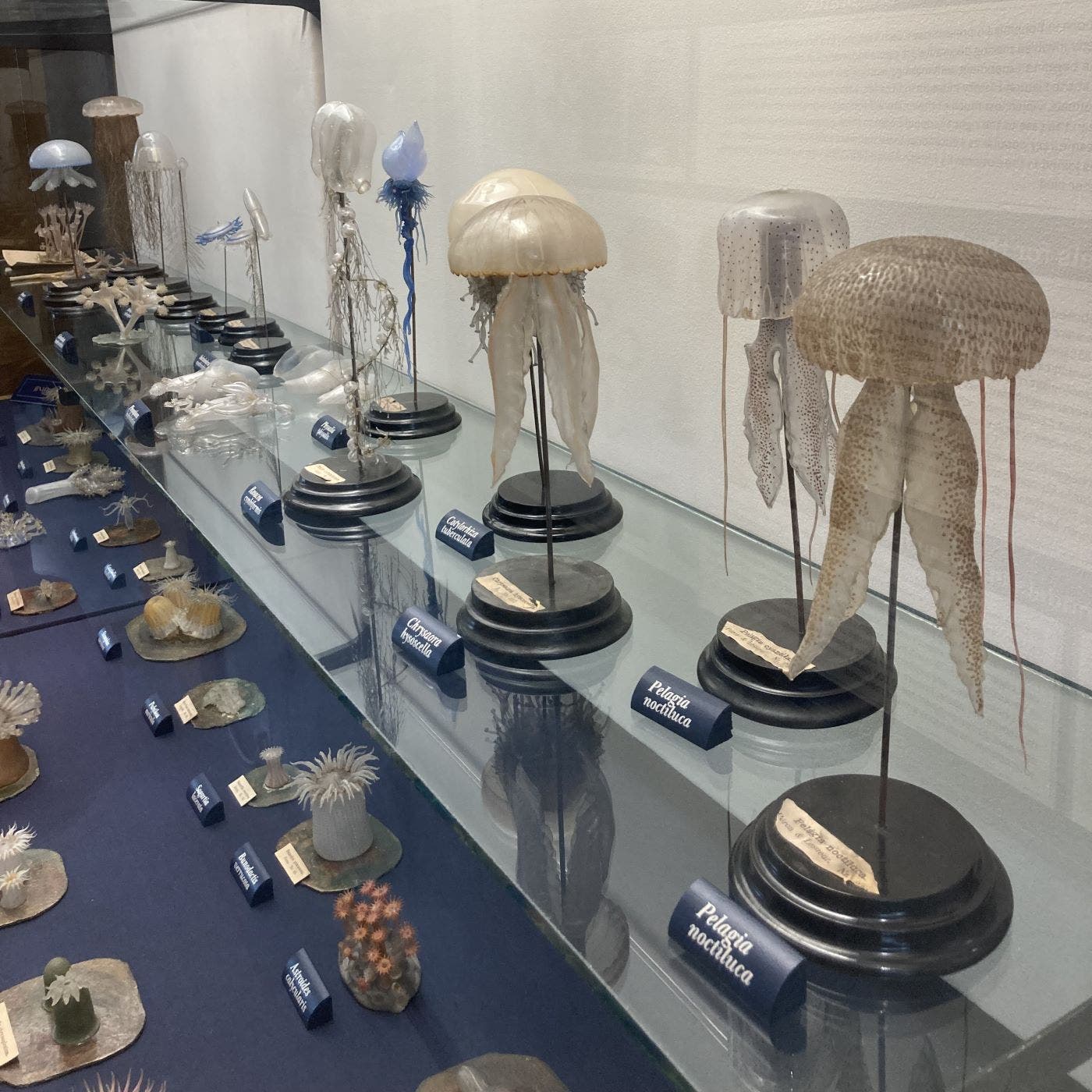
One of the long wall cases displaying the glass invertebates made by Leopold and Rudolf Blaschka, with jellyfish up top and sea anemones down below, Museum of the Earth, Cornell University (photo by the author)
The Museum of the Earth is an old-fashioned museum, geared to adults, with wordy, informative signage that is now frowned upon. But I love museums where you can learn as well as look. I show here several of their panels for the Blaschka displays. The cases are vertical wall cases, which are not as easy to look at as the look-down cases for the glass flowers at Harvard, but marine invertebrates are not flowers, and a Portuguese man o' war needs to stand tall. The delicate anemones and sea stars are almost beyond belief in their beauty and realism. I still cannot fathom how the Blaschkas were able to fashion such delicate replicas with an alcohol lamp and a blowpipe on a small wooden table.
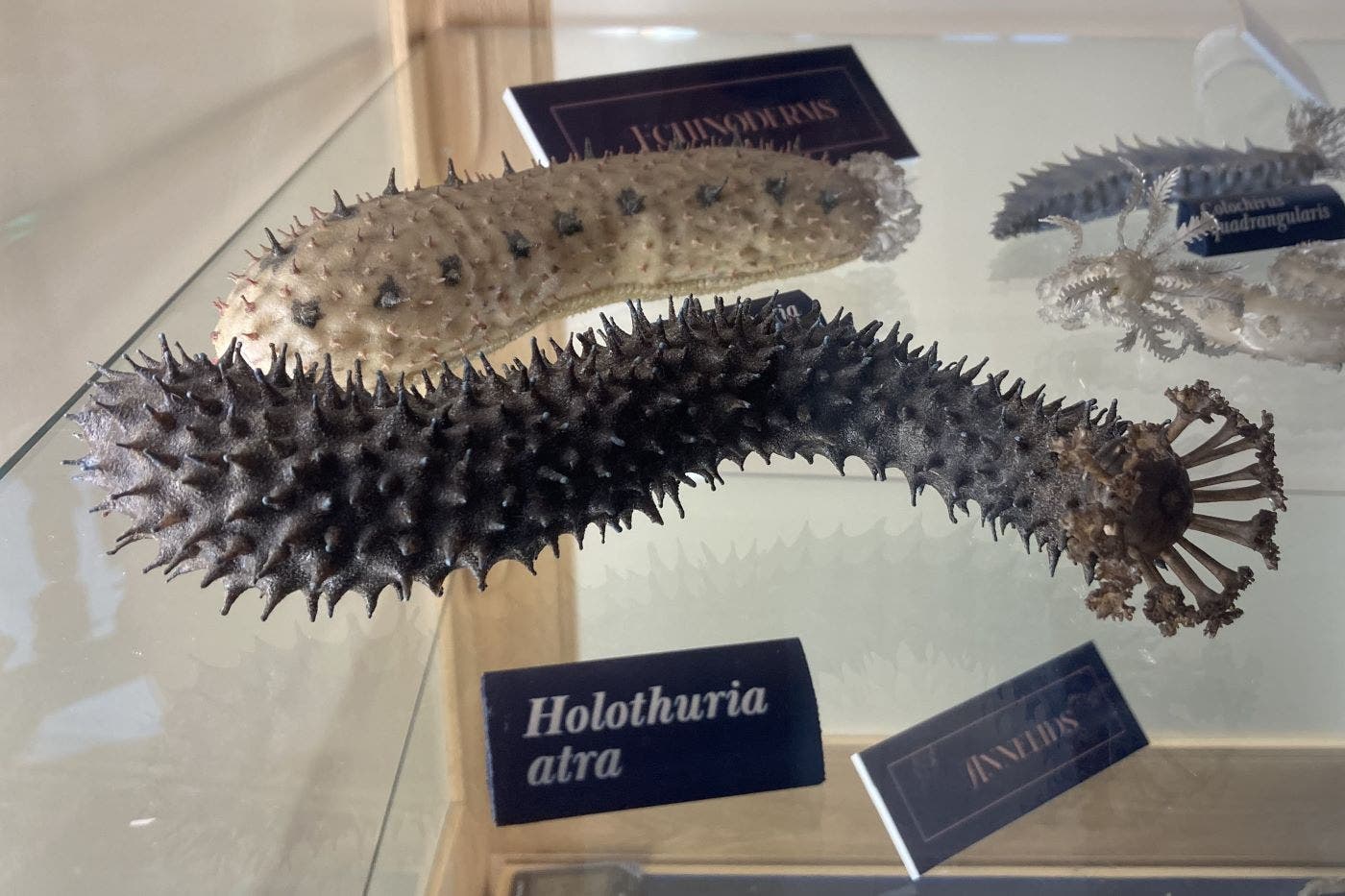
Holothuria atra, a sea cucumber, fashioned in glass by Leopold and Rudolf Blaschka, ca 1885, Museum of the Earth, Cornell University (photo by the author)
If you are not blown away by my iPhone photos, remember that you can find 251 professional, well-lighted, mounted-on-black-velvet photographs of the Blaschka Marine Invertebrates at the Cornell Digital Library.

Octopus vulgaris, common octopus, fashioned in glass by Leopold and Rudolf Blaschka, ca 1885, Museum of the Earth, Cornell University (photo by the author)
The Corning Museum of Glass is definitely not an old-fashioned museum, but it did not do justice to the Blaschkas. I found only two cases with Blaschka material, one of which contained their portraits, which I show here. It is possible that there was a more lavish Blaschka section in another part of the museum that I just didn't find – it is an immense place. Since most of the Cornell collection is stored there, one would expect to find a larger display. If I just missed it, I am sorry for myself, but happy for Blaschka fans. I did see two Wedgwood copies of the Portland Vase, and the first recreation of that vase in glass, so that longtime wish was fulfilled. And I did not miss the first cast of the Pyrex mirror for the Palomar telescope. But it is 16 feet across and is mounted between two floors, so it is hard to overlook. I will probably find an opportunity to discuss both the Portland Vase and the Palomar 200-inch disk on some future occasion.
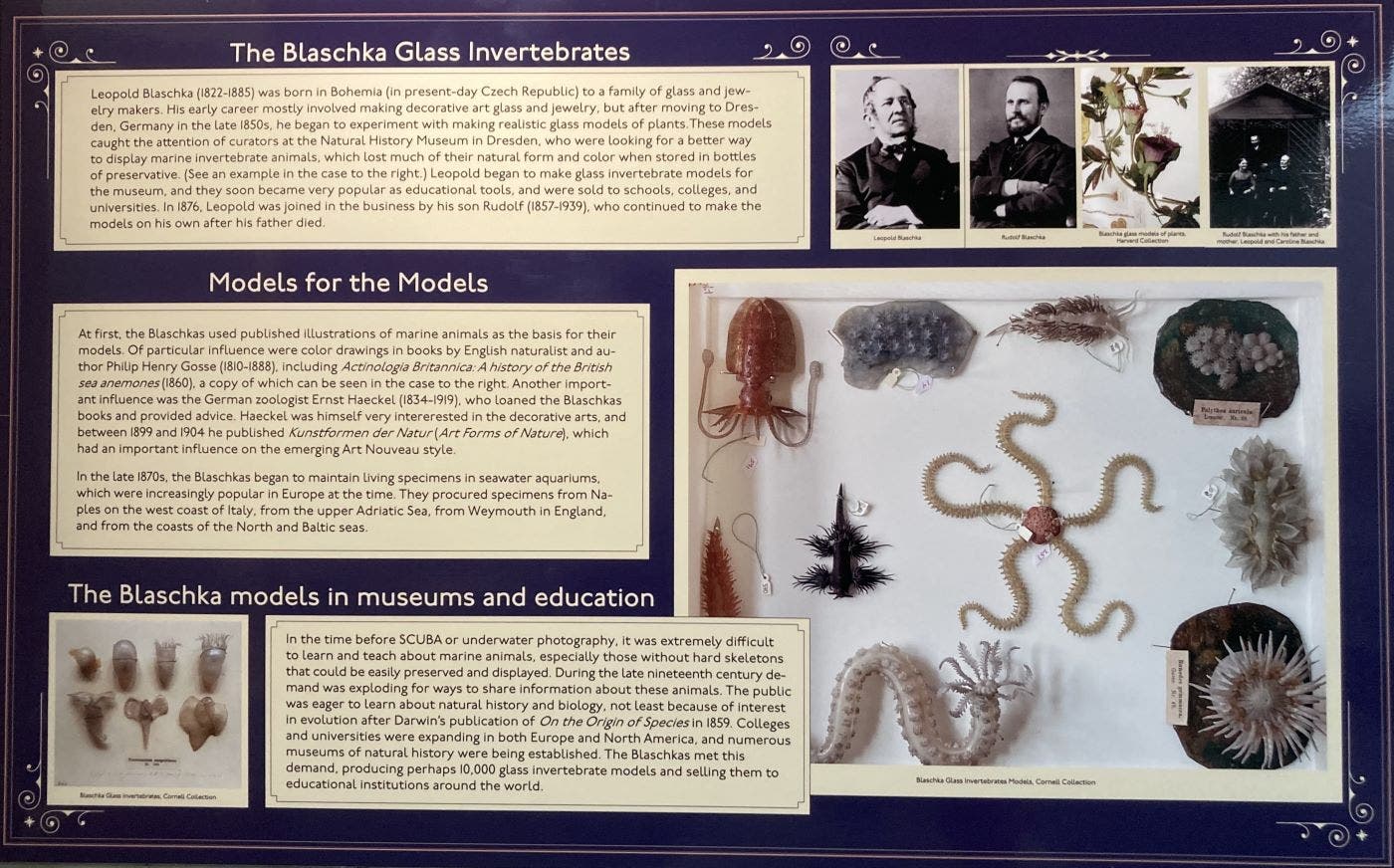
Another example of the signage explaining the Blaschka Marine Invertebrate Collection, Museum of the Earth, Cornell University (photo by the author)
And I fell in love with a full-size papier-mâché Stegosaurus that was made back in 1900 and found its way into the Museum of the Earth, when the Smithsonian Institution decided to find it a new home. It will certainly get a full presentation when the birthday of Frederic Lucas (who commissioned it) comes round again, next March.
William B. Ashworth, Jr., Consultant for the History of Science, Linda Hall Library and Associate Professor emeritus, Department of History, University of Missouri-Kansas City. Comments or corrections are welcome; please direct to ashworthw@umkc.edu.





